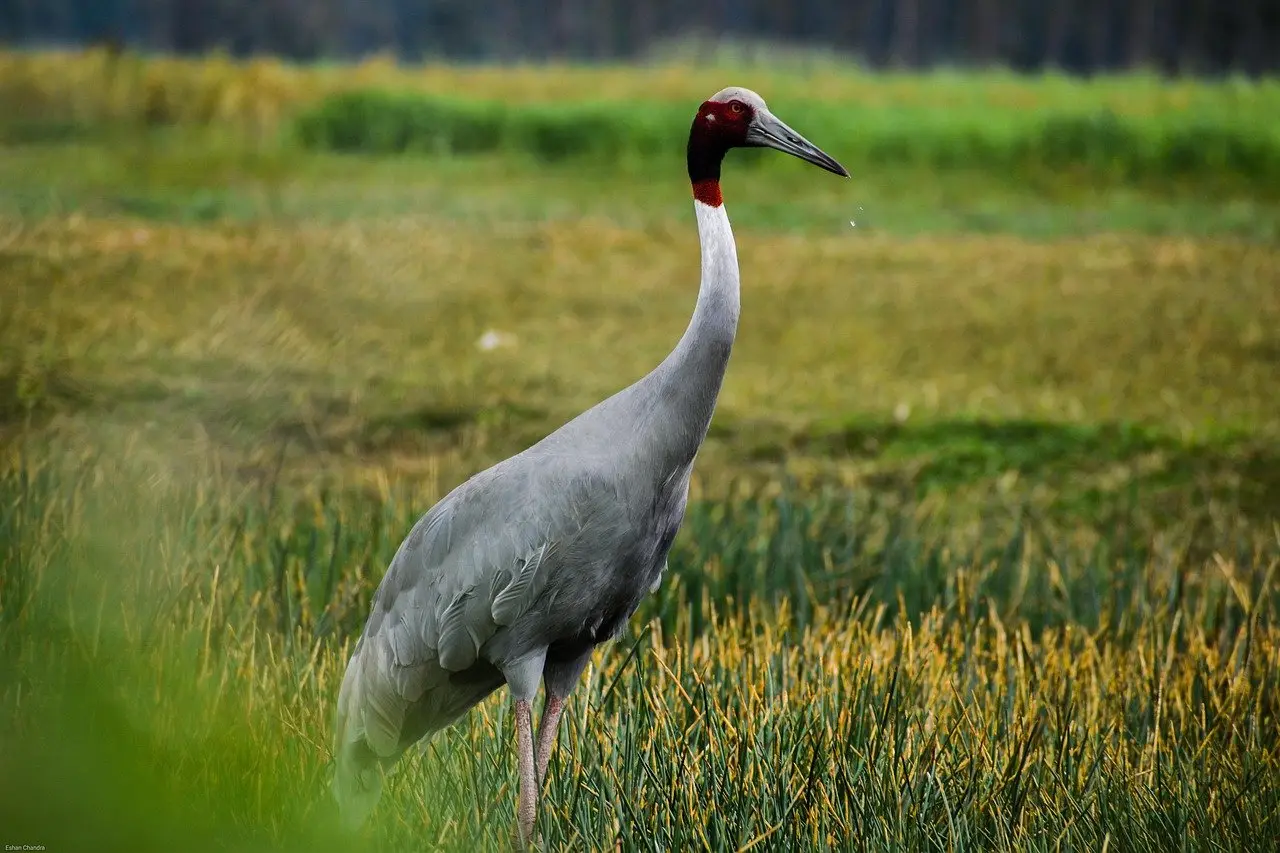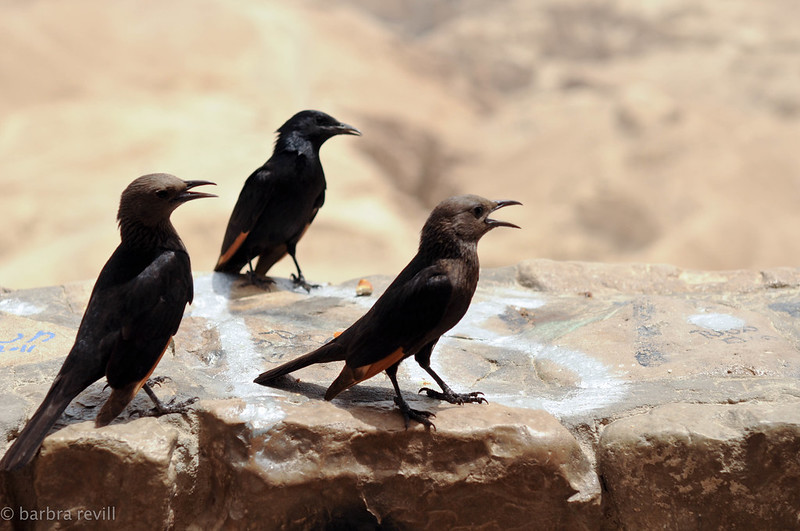The Sarus Crane is the tallest flying bird in the world. Its height reaches up to 1.8 m (5ft 11in). The wingspan can reach up to 2.3m (7ft 7in). It is a large non-migratory crane found in parts of the Indian Subcontinent, Southeast Asia and Australia.
The Sarus Crane is a resident breeder in lowland wetlands in South Asia and Southeast Asia. It is the only crane species found in parts of the Indian Subcontinent and Southeast Asia that is not threatened with extinction. The Sarus Crane differs from most other cranes in being largely terrestrial instead of primarily aquatic. Much of its diet consists of grass seeds, but it also eats insects and small fish. Although it breeds during the wet season, it feeds during both the dry and wet seasons.
This bird lives in pairs or small groups. They forage for food on grasslands, cultivated fields and marshes. They are omnivores which means that they eat both animals and plants. They eat insects, fish, molluscs, frogs and grains.
Facts About Sarus Cranes
The sarus crane is a large non-migratory crane found in parts of the Indian Subcontinent, Southeast Asia and Australia. The tallest of the flying birds, standing at a height up to 1.8 m (5 ft 11 in), they are a conspicuous species of open wetlands in south Asia. They are grey with a white patch on the crown and red legs that trail below when they fly. The wingspan can range from 2.3 to 2.6 m (7 ft 7 in to 8 ft 6 in). In flight, the long neck is kept straight and the long legs trail behind. Immature birds have light brown upperparts and head and lack the crimson area on the face.
Sarus cranes are distributed in South Asia, Southeast Asia, Australia and China; with some migrating populations are known from Korea, Japan and Taiwan. In India, sarus crane occurs mainly along the Gangetic Plains from Punjab to West Bengal and Assam in the east and Gujarat in the west as well as around Delhi. The sarus crane is found over a wide range of habitats including cultivated lands, paddy fields and grassy marshes in both rural and urban areas.
What Is Special About Sarus Crane?
The appearance of the Sarus Crane varies across its range. In Southeast Asia, adults have grey wings and body, with a white crown, red neck and legs. In Australia, adults are predominantly grey with some rufous in the wings and a red head.
Sarus crane is one of the world’s most visible and iconic birds and an ancient symbol for marital fidelity (Long-legged wading bird) .
The Sarus crane is non-migratory and unlike other cranes species this crane does not move from one place to another in search of food or during breeding seasons. This species is distributed across northern India, Nepal, Pakistan, Cambodia, Vietnam, Thailand, Laos, Japan and China.
They prefer to stay close to wetlands like lakes, ponds, marshes or swamps. They can also be seen around agricultural fields or grasslands near water bodies where they feed on small insects as well as aquatic plants and animals such as fish, frogs.
Can Sarus Crane Fly?
Yes, sarus cranes can fly as high as 1,500 meters (5,000 feet) and can fly at a speed of 50–55 km/h.
Sarus cranes stand about 1.5 metres (4.9 ft) tall, have a wingspan of 2.3 metres (7.5 ft), and weigh 6–10 kg (13–22 lb). The most important identifying feature is the overall grey colour and the straight, thick bill which is grey with a darker tip. Like other cranes it has long legs, a long neck, and wings that are longer than its body. Males are generally slightly larger in size and have a red crown.
Is Sarus Crane Endangered?
Sarus crane is endangered due to habitat loss and population decline.
This species is threatened by habitat loss, degradation and fragmentation. The main threats include conversion of wetlands to agriculture, industrial development (i.e. fish farming), pollution, disturbance and illegal hunting. Conversion of wetlands to agriculture has been a major threat to the Sarus Crane in recent decades.
The numbers of this species are decreasing throughout many parts of its range due to ongoing habitat loss and degradation, hunting, disturbance and collision with powerlines.
Conservation actions have been taken in India and Nepal to protect important roosting sites and nesting areas in these countries.





Leave a Reply